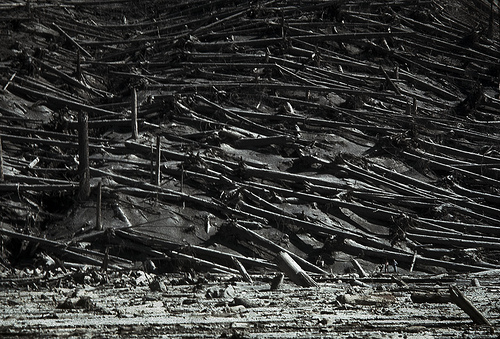What caused the incredible destruction in this remote Russian wilderness?
The Tunguska event has been a mystery for over a hundred years. On June 30, 1908, an explosion occurred over the Tunguska river in Russia. The mysterious event, which went largely unrecorded at the time, knocked over about 80 million trees in an area the size of a large city.
Eyewitnesses nearby reported seeing a huge, bright blue light streaking through the sky, followed by a colossal flash followed by an explosion that knocked people off their feet and blew out windows for miles around.
Theories regarding the Tunguska event have been numerous over the years. The most common theory, and the one which was largely held by the scientific committee, was that it represented an airburst of a small meteorite. This unusual impact was difficult to prove, as the theorized meteorite did not hit the ground and leave a tell-tale crater like most other such strikes.
Other theories have been floated, including the explosion of a chunk of antimatter, the natural venting of a pocket of gas from inside the Earth's crust, and the existence of a microscopic black hole (my personal favorite).
However, researchers have been painstakingly combing over the soil and remaining tree debris in Russia, and they have finally discovered conclusive proof that a meteorite was the culprit. Fragments of minerals that could only have come from a meteorite have been found in the Tunguska blast zone, recovered from a nearby peat bog.
Of course, the Tunguska event occurred long before the day of the dashboard cams. Nowadays, these rogue meteorites are often caught on film for the entire internet to watch in horror. Earlier this year, a smaller air burst occurred over Russia. This one was caught on several cameras, and injured 1,200 people in the Russian town of Chelyabinsk. Most of the injuries were inflicted by fallen glass, as the meteorite blew out windows with its passing shock wave.
In recent years our improved atmospheric monitoring has shown that events like these are actually somewhat commonplace. A medium-sized event (like the one that happened this February in Chelyabinsk) occurs about once a year. A large-size event (like the megaton blast at Tunguska) happens about once every 300 years.
As the Earth becomes more populated, it becomes more and more likely that an event like this will occur over a populated area. If a Tunguska event were to happen over, say, New York City, the entire area would be instantly destroyed. Just one more reason we need to get crackin' on that planetary laser shielding project!
